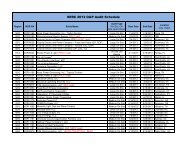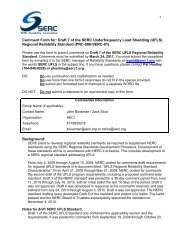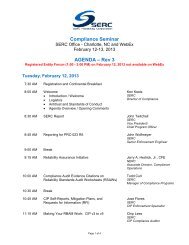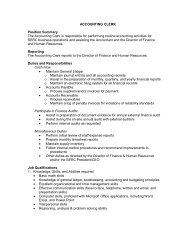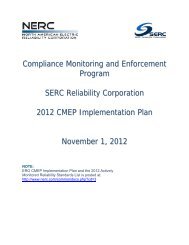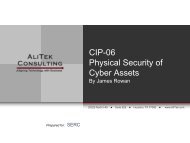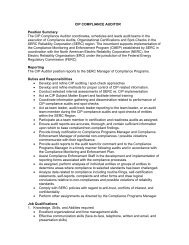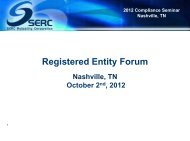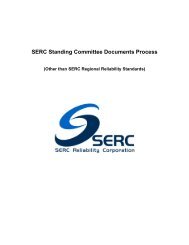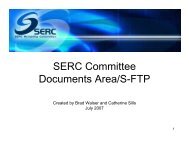RealityCharting e-book .pdf - SERC Home Page
RealityCharting e-book .pdf - SERC Home Page
RealityCharting e-book .pdf - SERC Home Page
- No tags were found...
You also want an ePaper? Increase the reach of your titles
YUMPU automatically turns print PDFs into web optimized ePapers that Google loves.
Step Six: Identify Effective Solutions<br />
chart has been prepared properly, you will be more likely to convince<br />
those who have the authority of the value and efficacy of the solution.<br />
The Realitychart can significantly expand your sphere of influence<br />
because it is not just another opinion-laced story. It is evidence-based<br />
causal relationships, which are hard to ignore, and if the reviewer<br />
does find issues with your chart, engage them and include their<br />
perspective.<br />
The criteria that causes such a wide variety of possible solutions is the<br />
need for solutions to meet our goals and objectives. Most businesses exist<br />
to make money, so the solutions should provide a maximum return on<br />
investment (ROI). Many companies have an established ROI requirement<br />
before implementing a solution. An alternative to measuring ROI is to<br />
measure and correct the number of problems above some threshold<br />
criteria, for instance, all events costing more than $50,000 in lost revenue.<br />
If over time the number of events exceeding this level of concern goes<br />
to zero, then your problem-solving process has been effective. If your<br />
company is interested in continuous improvement, the threshold<br />
criteria should be evaluated and changed according to your goals and<br />
objectives.<br />
An important aspect of the solution criteria is the “you” or “your.”<br />
Your control and your goals mean the solution is owned by those who<br />
are going to be responsible for the failure—no one else. The implications<br />
of this are multifaceted. It means that no outside organizations have the<br />
right to second-guess the solutions unless they are willing to accept the<br />
consequences of failure. It also means all stakeholders must understand<br />
what their goals and objectives are before they can be expected to be<br />
effective problem solvers. Many employees simply have no idea what<br />
their goals and objectives are, so they have been set up to fail as effective<br />
problem solvers.<br />
Every solution is directly related to the purpose for solving the<br />
problem. When employees interject their own purposes into the<br />
solution, they may or may not coincide with the purpose of the team<br />
or organization. Look for these biases when evaluating solutions. For<br />
example, if the purpose of an organization is to operate safely, the solution<br />
to a production problem cannot include creating a safety hazard. Unfortunately,<br />
we humans find it difficult to recognize all our goals and objectives<br />
when considering problem solutions. We tend to be myopic and only<br />
recognize one goal or purpose for a given problem. While many organizations<br />
today have a set of company goals in the form of mission statements and<br />
strategies, these are rarely internalized by every employee.<br />
117



